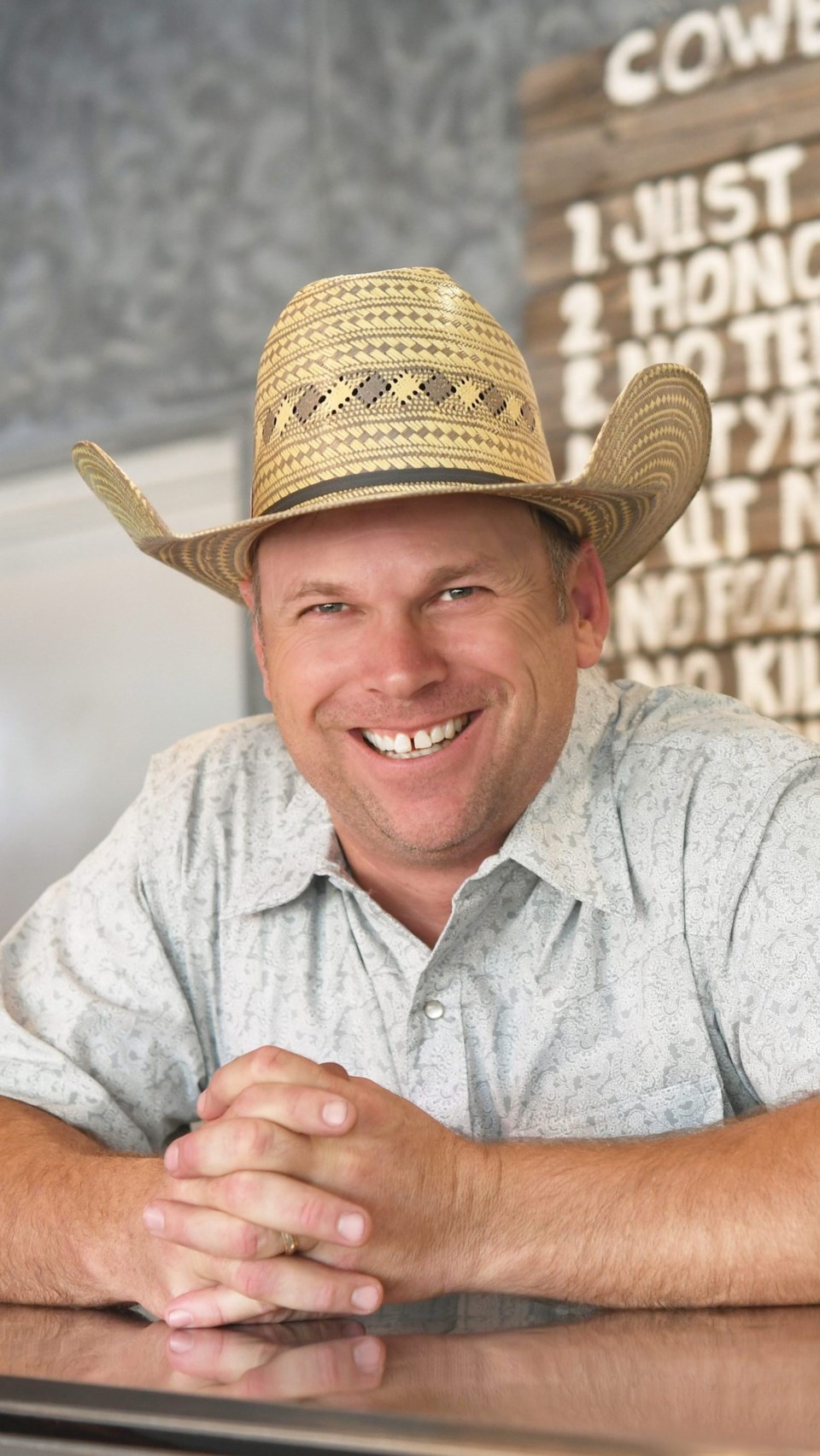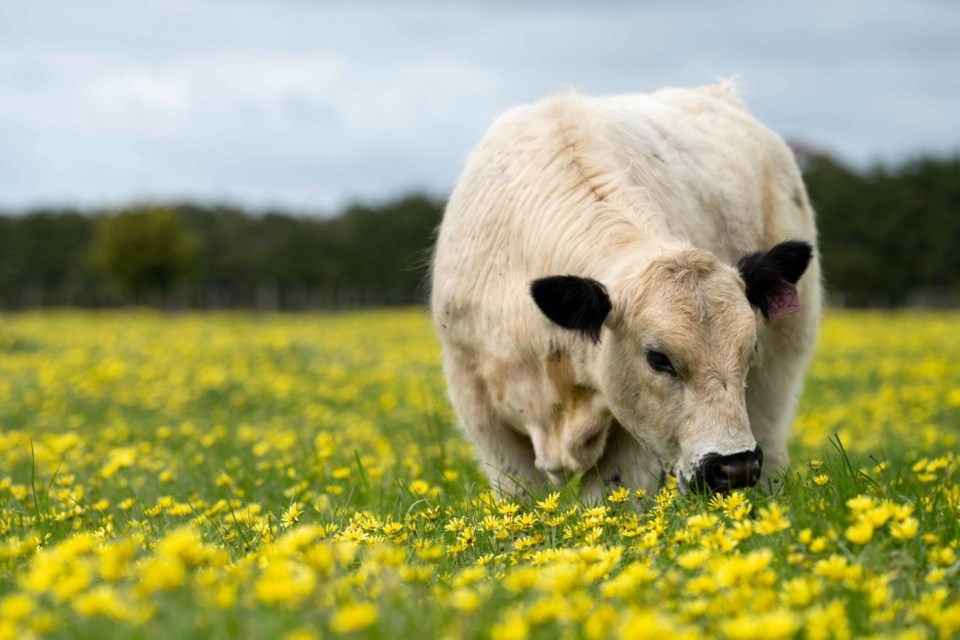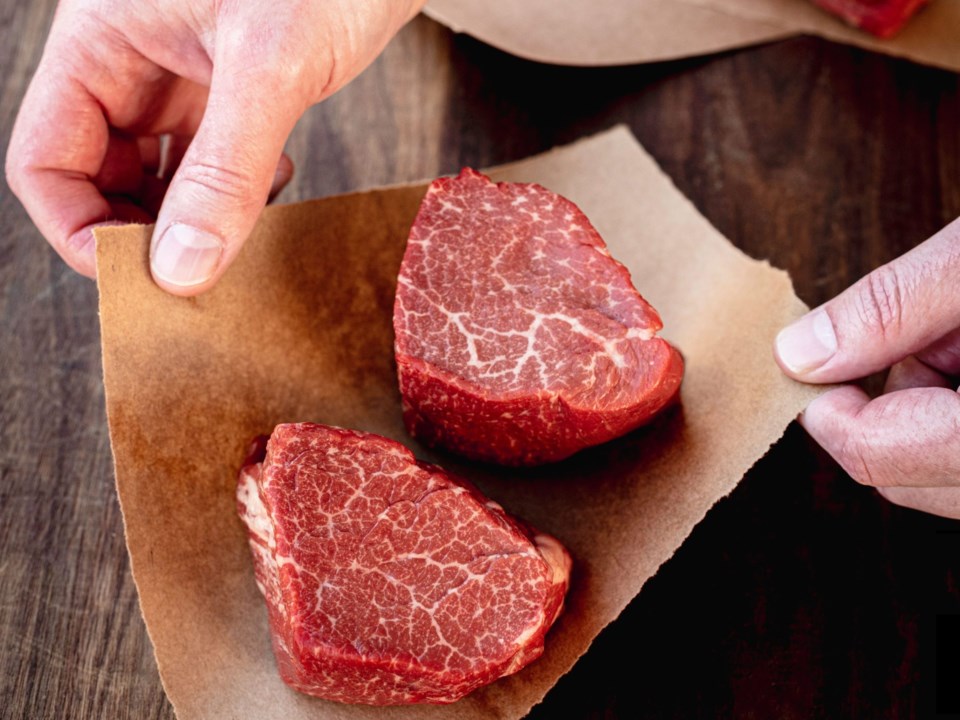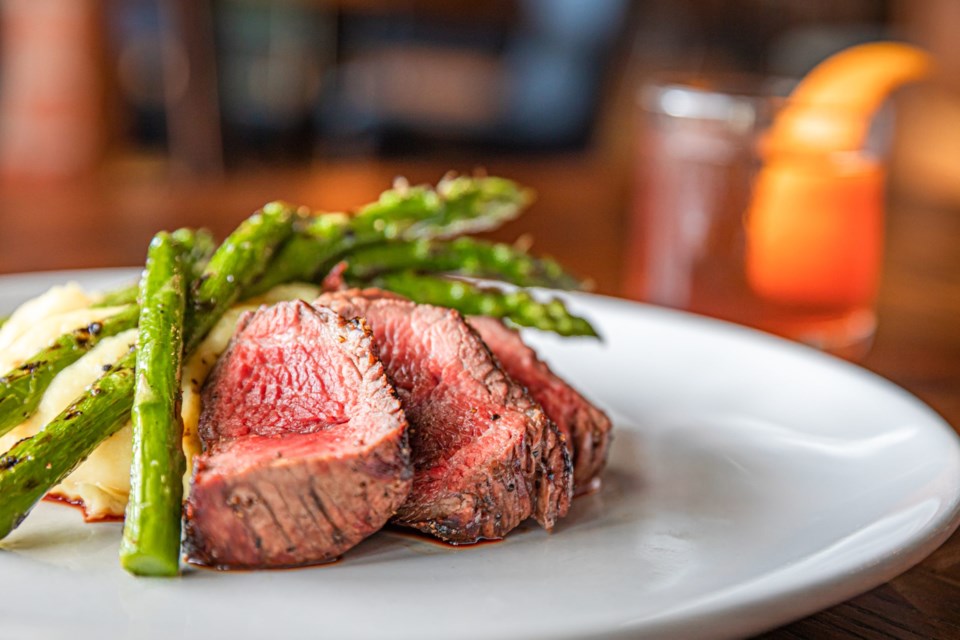Today’s beef has a divisive reputation.
For years, climate and animal rights activists have called for an end to mass meat consumption, citing a number of reasons from methane production of cattle herds to soil and water pollution created by too much animal waste. Dust clouds hover over feedlots in dry areas of Texas and Kansas, mimicking the choking man-made smog that threatens cities such as Mumbai and Los Angeles. To be sure, cattle ranching can be an unpopular business.
At the same time, according to the USDA, domestic beef production has increased in the past years, from 23.7 billion pounds in 2015 to 27.6 billion pounds in 2020. Americans’ appetites haven’t waned, but their concerns have shifted to what goes into their food. Increasingly, consumers are asking questions about both the quality and the health of the meat on their plate. Is it organic? Local? Grass-finished, or at least grass-fed? And is there
any difference?
In an industry facing criticism and skepticism on all sides, it can be difficult to navigate the politics of meat. To separate marketing fluff from true quality, some local producers have a straightforward message: To be better, do better.
It's genetic
Matt Hamilton, owner of Local Yocal butcher and restaurant in McKinney, is one of those who is committed to doing better. He began Genesis Beef in 2009, which evolved into the butchery arm of Local Yocal to control the processing of his beef to his standards. His goal was twofold: to sell healthier meat of the highest possible quality.
“There’s what we call cleanliness, which is the absence of drugs and preservatives,” he says. “But you can still have really low-quality, not enjoyable to eat meats that are free of all that. We want to be both; tender, flavorful, juicy meats, but also the healthiest meat for you.”

Hamilton accomplishes this by his golden rule of “genetics, genetics, genetics.” He raises Murray Grey cattle, a breed that was accidentally discovered in Australia. Instead of being bred to chase trends or emphasize certain attributes, Murray Grey have been largely left to their own devices. “They are just pretty true to cows being cows, which means they produce more meat and do better on grass,” he says.
Murray Grey have another advantage to being raised in Texas: the namesake color of their hide. “Their light color means that they don’t get stressed from the heat. So they’ll graze for about four to five hours longer per day than black-colored cattle,” Hamilton explains. This extra grazing time allows Murray Greys to fatten themselves naturally on grass, rather than being shipped to a feedlot to finish on calorie-dense grain.
Avoiding feedlots can go a long way toward creating a healthier end product. Cattle — especially breeds such as wagyu, which Hamilton also raises — are naturally high in Omega-3 fatty acids. These acids make up a majority of cell membranes and work toward healthy hearts, lungs and immune systems. In contrast, their cousins, Omega-6 fatty acids, can cause inflammation when an individual’s diet is out of balance.
“Typically, when you put a steer on feed [to finish it], he goes from 1:1 Omega-6 to Omega-3 balance to anywhere between 15-21 Omega-6 fats per 1 Omega-3,” Hamilton explains. “It’s out of balance, which is reflective of the American diet.”

Tough medicine
Feedlots affect more than just the diet of cattle: They can affect their health as well. Cramped conditions provide the ideal environment for viruses and bacteria to thrive. To proactively prevent infections that could devastate a whole herd of cattle, antibiotics are added to the feed.
By the time the meat reaches the grocery store shelves, it can contain more traces of antibiotics than you might expect, despite USDA regulations claiming otherwise.
“We use drugs in the United States that disqualify our beef for export to China, Australia and the EU,” Hamilton says. He traveled abroad to various countries including China and learned how their acceptable threshold for these drugs differs from the American standard. “These drugs are considered safe in amounts of 5 parts per billion by their standards, which is basically a way to quantify zero. Most people have no idea that the meat they buy in the grocery store couldn’t be exported to China.”

Statistics like this are behind many small producers’ decisions to raise cattle on a smaller, more sustainable scale. “I originally started raising cattle because I had high blood pressure and my doctor told me to cut out red meat,” says Keith Brochhausen of Brockview Farms in Frisco. “When I told him I had been thinking about raising cattle for my own consumption, he said, ‘Hold on; grass-fed beef is your best option if you’re looking to live a cleaner lifestyle.’”
Brochhausen went on to do his own research, where he found that “there’s so much in [feedlot beef ] that they don’t tell you is in there.” This includes both antibiotics and growth hormones, which are used to quickly fatten cattle before slaughter. “It’s all about turning a quick profit. A steer in a feedlot will take about 12 to 16 months until it’s ready for processing, more or less. For us, it takes about 24 to 28 months,” he says. In the time it takes a Brockview Farms steer to mature without hormones, two industrial steer could be
processed and ready to go. The monetary savings of this efficiency are passed on to the consumer, but with a hidden cost.
“If you don’t have an alternate place to buy your beef, do you really want to know?” Brochhausen asks, alluding to the fact that not everyone has the option for local, sustainably produced beef. “Do you want to know what they’re doing, or do you want to just not know it and look the other way?”
Ongoing education
Hamilton, for one, thinks that people do want to know. “An educated consumer makes good choices,” he says, which is part of why he began the popular Steak 101 class at Local Yocal. Started in 2012, the 21/2-hour course lets participants sample 18 cuts of beef while they learn more about the beef industry and the way Hamilton raises cattle. Since its inception, over 22,000 customers have taken part.
For many, Steak 101 is the first step for consumers to think critically about what’s on their plate. “I think people are so overwhelmed that they feel like they can’t do anything,” Hamilton says. “It’s in our psyche to think ‘If I can’t be super healthy, then I just have to be super unhealthy.’ We need a mindset of ‘Just take one step. And then another. And then another.’”




